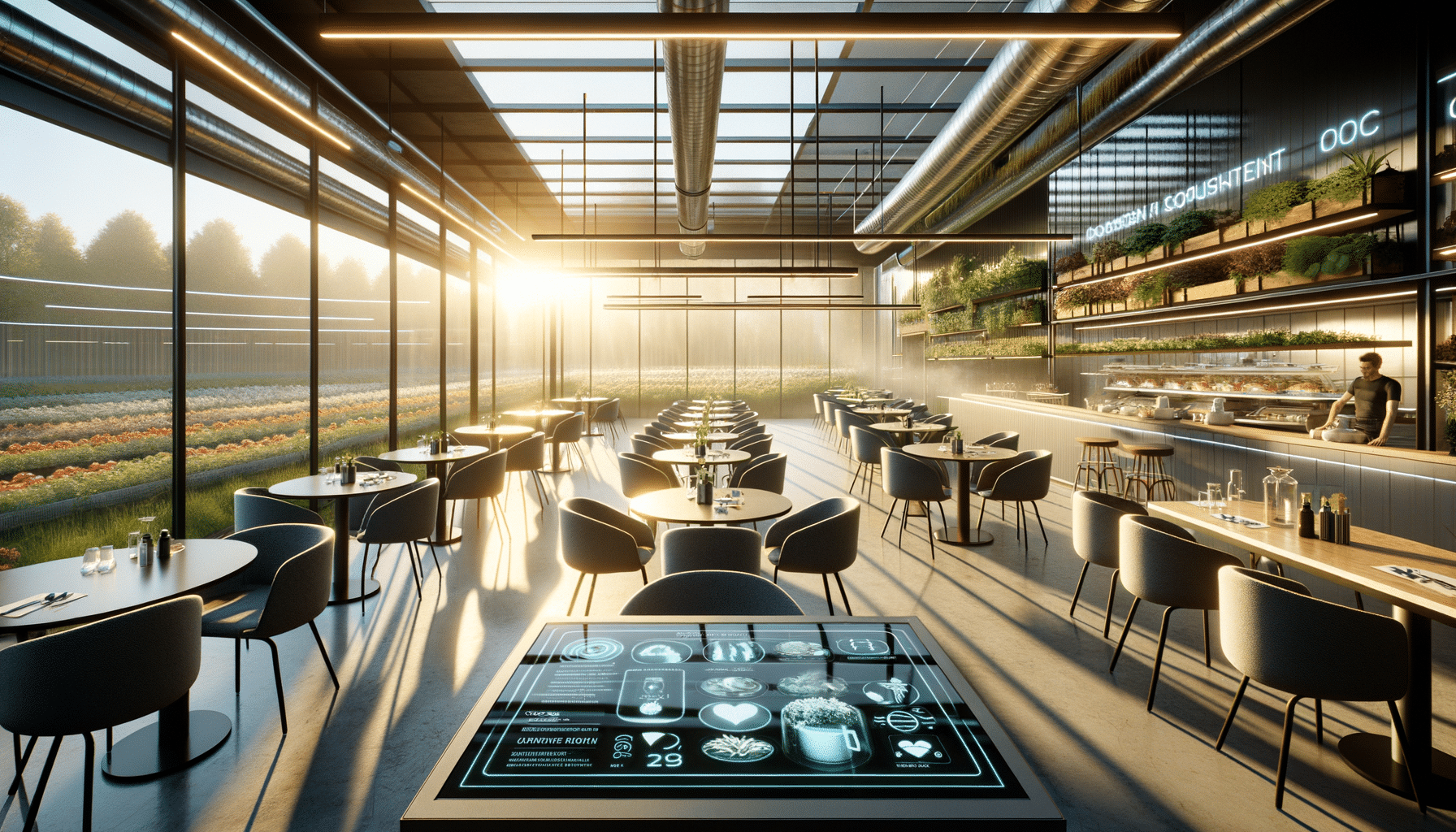
This is How Restaurants will Look in 2030
Technology: The Backbone of Future Dining
As we peer into the future of dining, technology stands out as the cornerstone of transformation. By 2030, restaurants will heavily integrate advanced technologies to enhance both operational efficiency and customer experience. Automated systems will manage everything from order taking to food preparation. The use of artificial intelligence (AI) for personalizing dining experiences will be commonplace, allowing restaurants to tailor their offerings based on customer preferences and past behaviors.
Imagine walking into a restaurant where a digital concierge greets you, already aware of your dietary preferences and previous orders. This level of personalization will not only improve customer satisfaction but also increase loyalty. Additionally, augmented reality (AR) menus will provide diners with interactive and immersive experiences, offering detailed information about dishes, including ingredients and nutritional content.
Furthermore, kitchen operations will see a significant overhaul. Robotics will assist in cooking, ensuring precision and consistency, while IoT devices will monitor inventory levels and kitchen equipment, alerting staff to any maintenance needs. The integration of blockchain technology for secure and transparent supply chain management is also expected, ensuring that ingredients are sourced ethically and sustainably.
- AI-driven personalization of dining experiences
- Augmented reality menus for enhanced customer interaction
- Robotics in kitchens for efficiency and consistency
- Blockchain for transparent supply chain management
Sustainability: A Core Value
Sustainability will be a defining characteristic of restaurants in 2030. As environmental concerns continue to rise, the industry will adopt practices that minimize ecological impact. This shift will be driven by both regulation and consumer demand for eco-friendly dining options.
Restaurants will increasingly source ingredients locally, reducing the carbon footprint associated with transportation. Urban farming and hydroponics will become integral parts of restaurant operations, allowing establishments to grow their own produce on-site. This not only ensures fresh ingredients but also reduces dependency on external suppliers.
Moreover, zero-waste kitchens will become the norm. Chefs will innovate to use every part of an ingredient, and composting systems will be implemented to handle organic waste efficiently. Restaurants will also prioritize the use of biodegradable packaging and utensils, moving away from single-use plastics.
Energy efficiency will play a vital role, with establishments investing in renewable energy sources such as solar and wind. Smart energy management systems will optimize energy use, further reducing environmental impact.
- Local sourcing and urban farming for fresh, sustainable ingredients
- Zero-waste kitchens and composting systems
- Biodegradable packaging and utensils
- Renewable energy and smart energy management systems
Redefining Ambiance and Space
The ambiance and layout of restaurants will undergo a significant transformation by 2030. With an emphasis on creating unique and immersive experiences, establishments will explore innovative design concepts that blend aesthetics with functionality.
Flexible seating arrangements will cater to different group sizes and dining preferences. Modular furniture will allow restaurants to easily reconfigure spaces to accommodate private gatherings or communal dining events. Additionally, the integration of smart lighting and acoustics will enable dynamic adjustments to match the mood and time of day.
Virtual reality (VR) elements will be incorporated to transport diners to different environments, offering experiences that go beyond traditional dining. Imagine enjoying a meal in a virtual vineyard or under the sea, all from the comfort of your restaurant seat.
Outdoor dining spaces will be more prevalent, with designs that seamlessly integrate nature and architecture. These spaces will be equipped with climate control features, ensuring comfort regardless of weather conditions.
- Flexible seating and modular furniture for adaptable spaces
- Smart lighting and acoustics for dynamic ambiance
- Incorporation of VR for immersive dining experiences
- Integration of outdoor spaces with climate control
Health and Safety: A Continual Priority
In the wake of global health challenges, restaurants in 2030 will prioritize health and safety with renewed vigor. Enhanced hygiene protocols will be standard practice, supported by technology to ensure compliance and efficiency.
Touchless technology will be widely adopted, reducing the need for physical contact. Digital menus accessible via smartphones or tablets will become commonplace, and contactless payment systems will streamline transactions. Additionally, air purification systems will be installed to maintain clean and safe indoor environments.
Restaurants will also invest in staff training programs focused on health and safety best practices. This will be complemented by regular audits and inspections to uphold high standards.
The focus on health will extend to menu offerings as well. Nutritionally balanced and allergen-friendly options will be emphasized, catering to a diverse range of dietary needs. Transparency in ingredient sourcing and preparation will build trust with customers, ensuring they feel safe and informed about their dining choices.
- Adoption of touchless technology for hygiene and convenience
- Installation of air purification systems for safe environments
- Comprehensive staff training on health and safety protocols
- Emphasis on nutritionally balanced and allergen-friendly menu options
Conclusion: Embracing the Future of Dining
As we envision the restaurant landscape of 2030, it’s clear that innovation, sustainability, and customer-centric practices will define the future of dining. The integration of advanced technologies, commitment to environmental responsibility, and focus on health and safety will create dining experiences that are not only enjoyable but also aligned with the values of modern consumers.
For restaurant owners and industry stakeholders, embracing these changes is essential to remain competitive and relevant. By anticipating and adapting to future trends, they can ensure their establishments are prepared to meet the evolving needs and expectations of diners.
Ultimately, the restaurants of 2030 will be more than just places to eat; they will be immersive spaces that connect people, celebrate flavors, and contribute positively to the world around them. This transformative journey promises to redefine the very essence of dining, offering exciting possibilities for both restaurateurs and patrons alike.


